The busiest part of our Purple Martin season is now wrapping up. There is a two week window where it seems all the young reach the age that are ready to band and its also the perfect opportunity to deploy the GPS data loggers to a few adult birds.
Each summer, the PMCA bands every nestling that is hatched from our four colony sites. This year that amounted to just over 450 nestling birds. Banding consists of placing a silver federal band on the left leg and a purple auxiliary band on the right leg of the bird. The Purple auxiliary band is a shortened version of the numbers on the federal band and is much easier for us to read when using a spotting scope. This ongoing study allows us to see which location returning birds hatched from, their age, and is a useful way to identify individuals who are a part of other research projects.
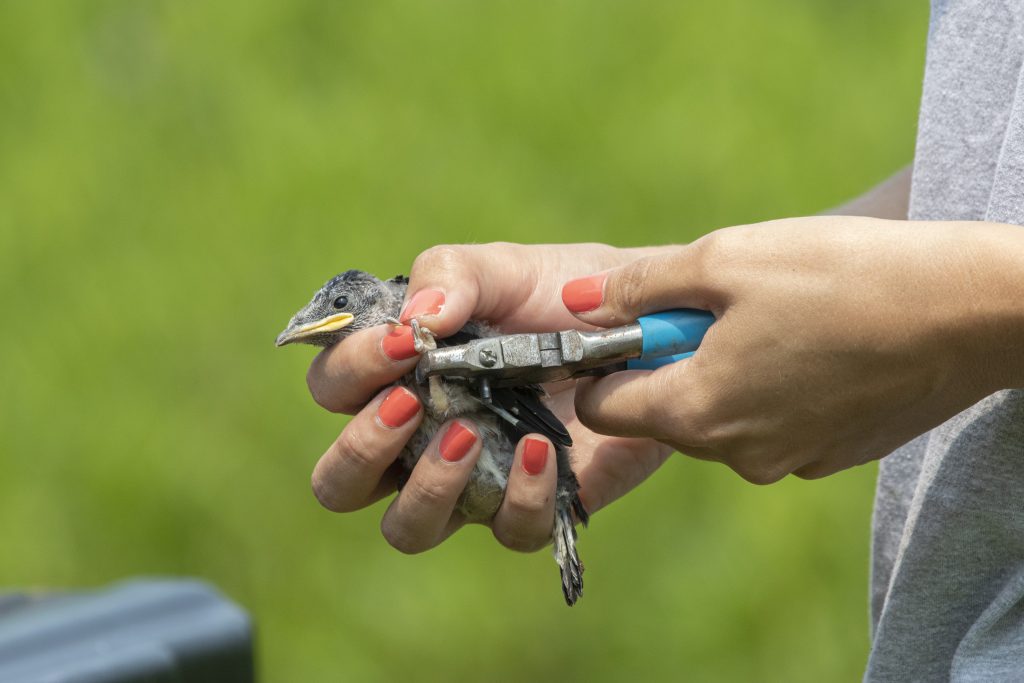
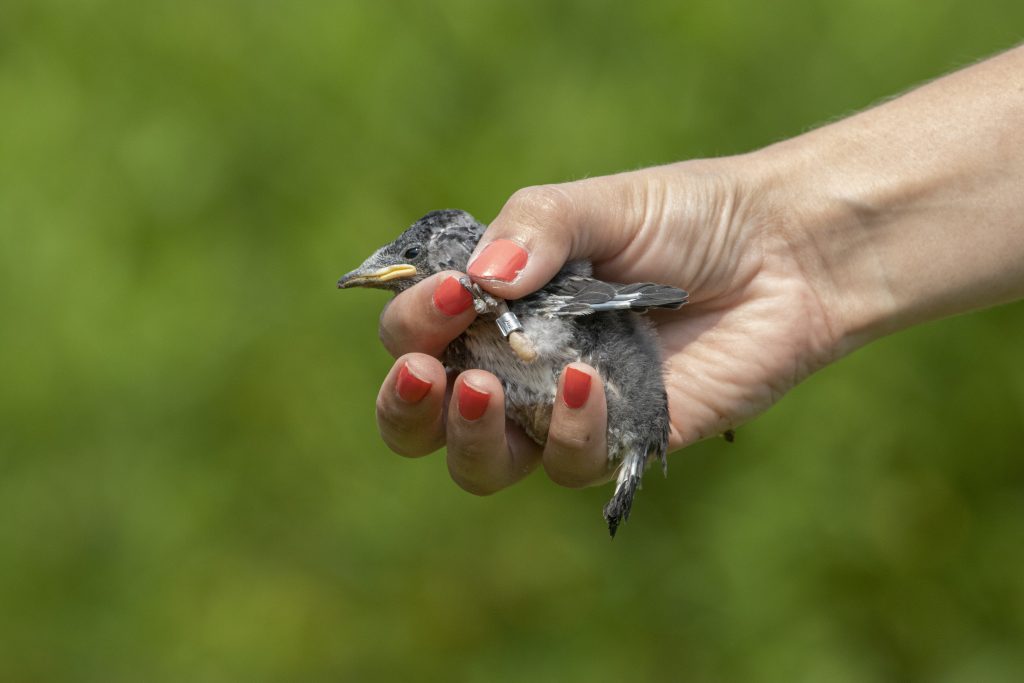
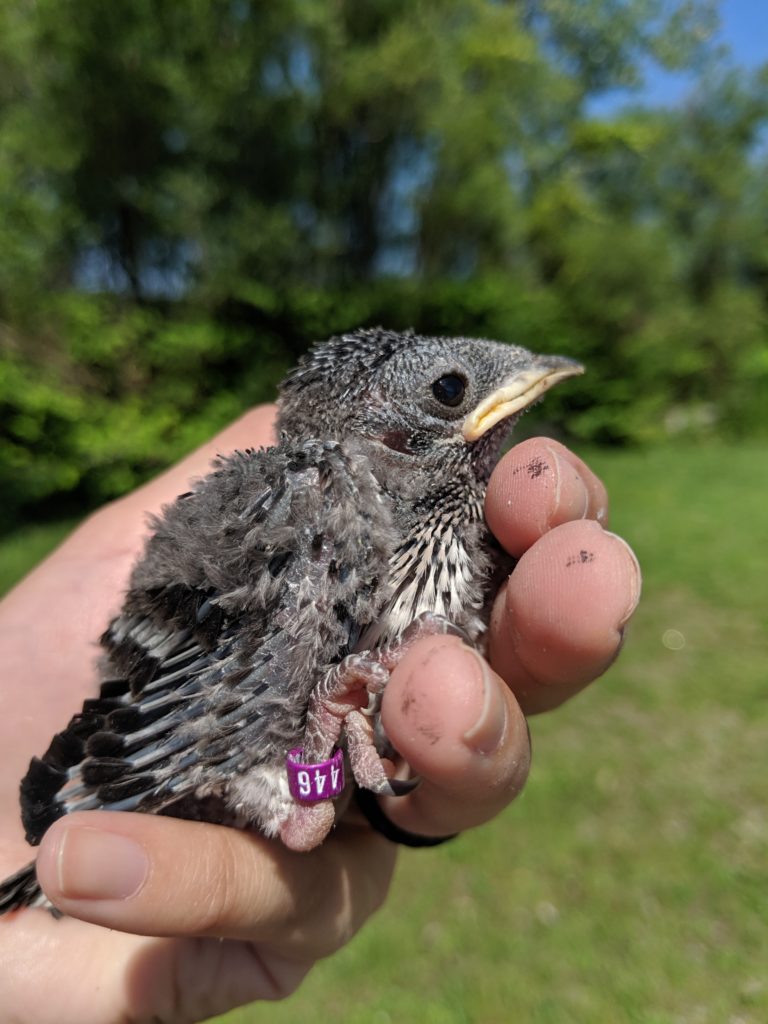
The nestlings are ready to band when they are at least eleven days old. Any younger and their legs are actually too large.
We also collected fecal samples from nestlings at the time of banding. These samples will be analyzed in order to get a clearer picture on the martin’s diet in our area. It’s important to determine if an insect species that is essential to a martin’s diet is at risk from factors like pesticide use or the changing climate.
Feather samples from adult birds were collected to take a look at what pollutants they may come into contact with while in Brazil or in their breeding grounds. A few feathers plucked from the backs of grown fledglings act as a baseline to compare pollutant levels from the adults who have been in the outside world.
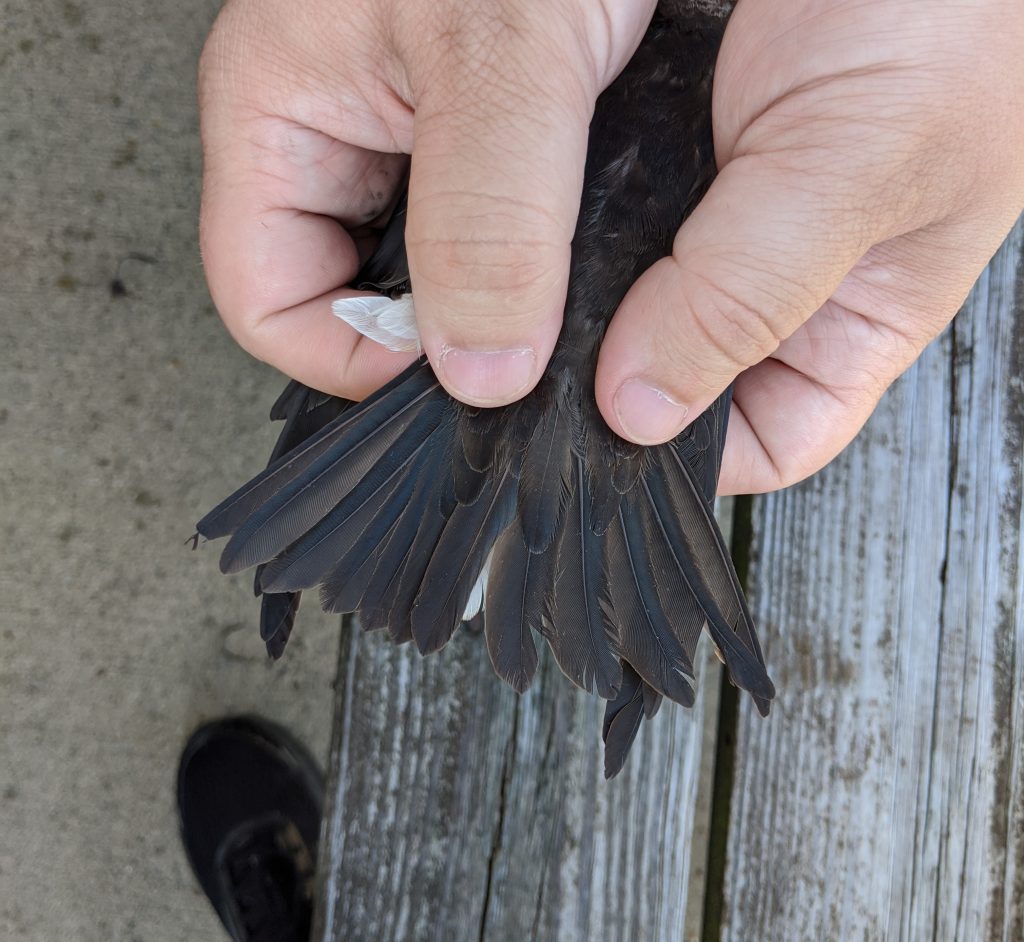
This season, we were able to deploy nine GPS backpack data loggers to the backs of adult Purple Martins. The birds will wear these devices over the next year as they finish up their summer with us, migrate to Brazil and return back to the PMCA colonies next spring. In order to obtain the data that these devices have collected, we will have to recapture the birds and remove the device. We hope to gain more insight on their migration patterns and areas of importance for their survival in Brazil.
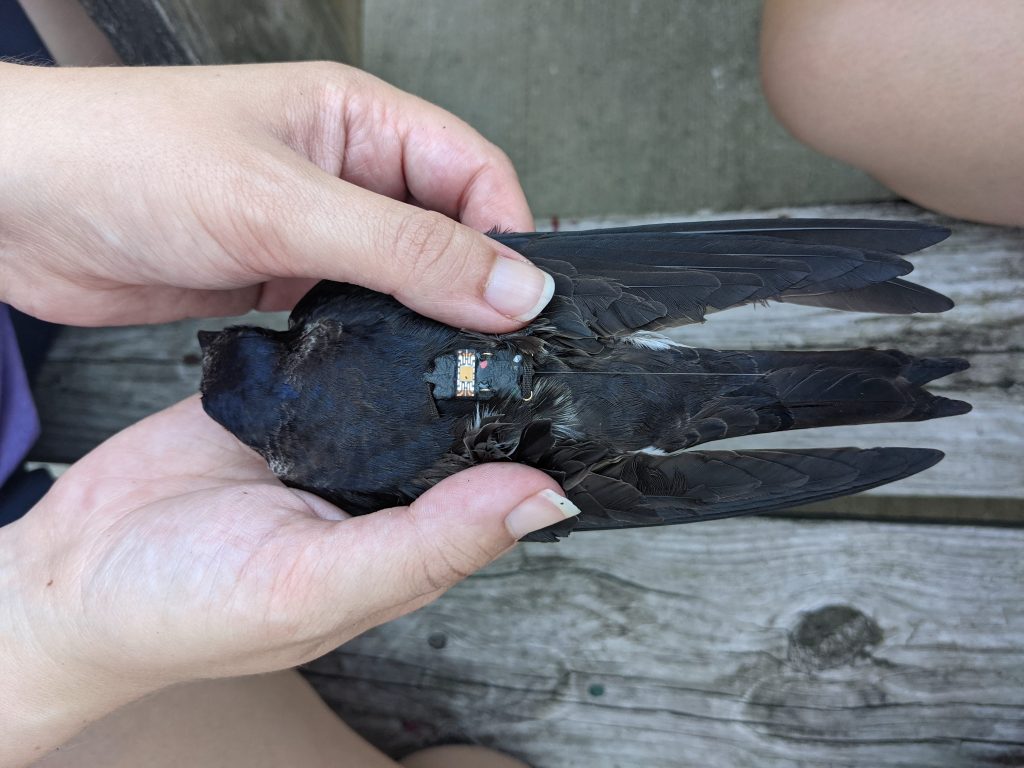
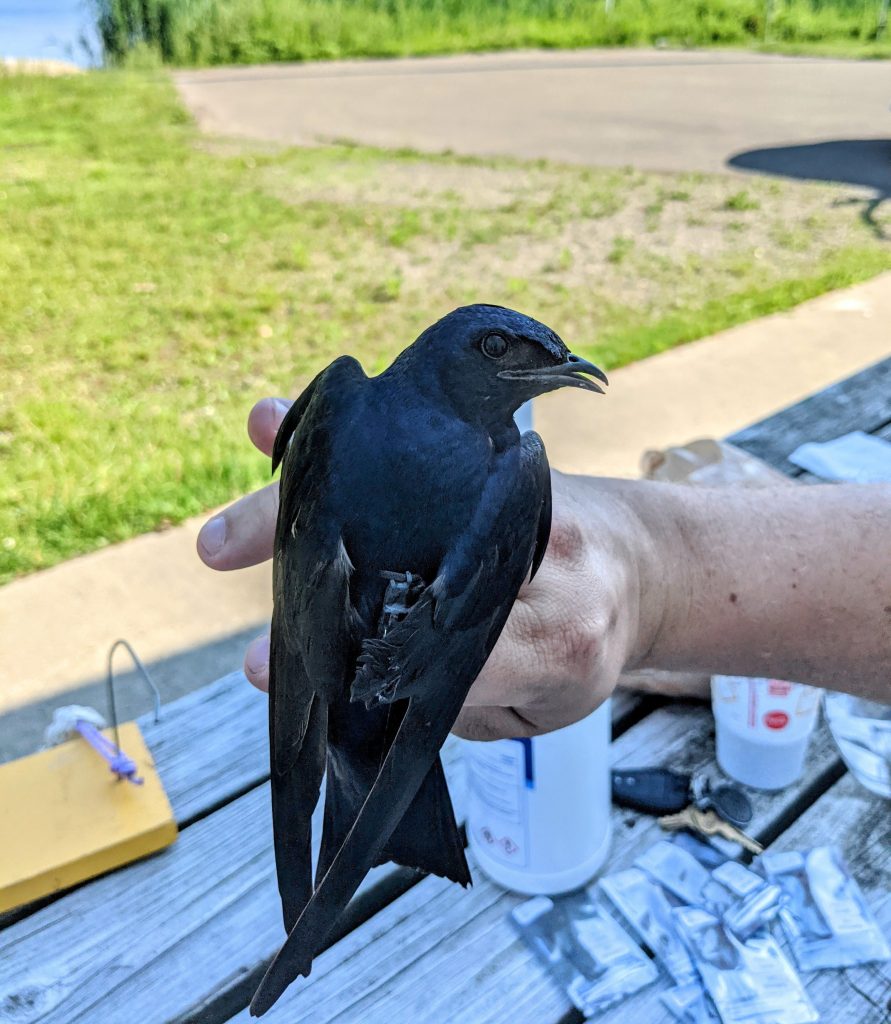
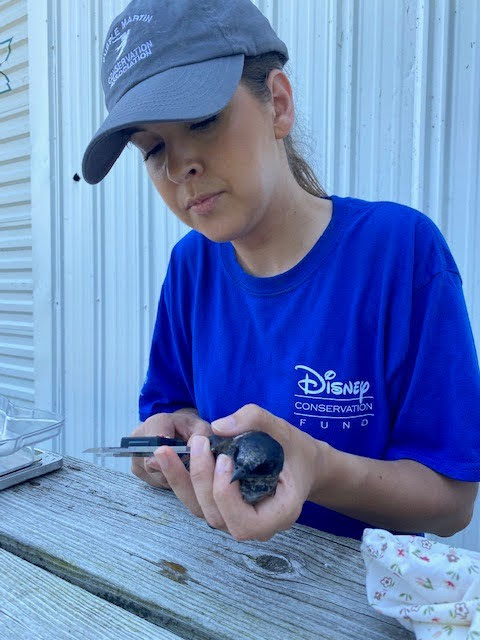
During GPS deployment, we also collect several biometrics on each bird. We measure their weight, tarsus length, wing chord and head-bill length. These values tell us about the overall health of the bird and can be compared to measurements taken in past years.
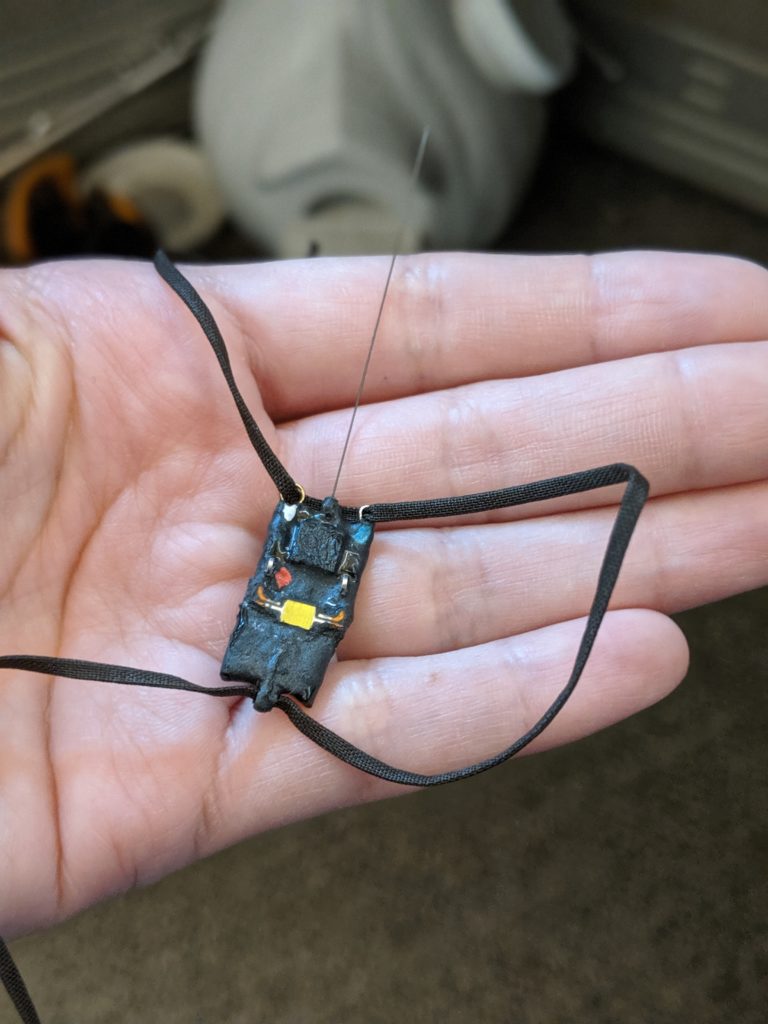
The Purple Martin nestlings in our LiveCam have all successfully fledged. It is always a bittersweet time of year – we are sad to see them leave but happy they have taken flight on their own. Check out our YouTube channel to see our Season 6 Martin TV recap video and re-live all of the great moments that happened with our martin family throughout the season.
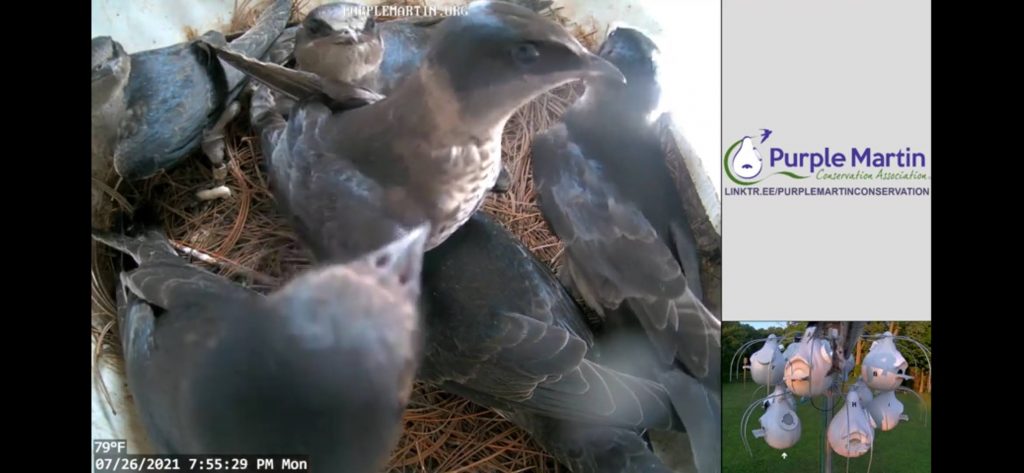
Most of the housing at the PMCA colonies are now empty. The birds are still hanging around and we take time to enjoy these last days hearing their cheerful song while we can. Soon they will head to the nearby pre-migratory roost before heading south to Brazil in the fall.
Mercedes
PMCA Biologist
